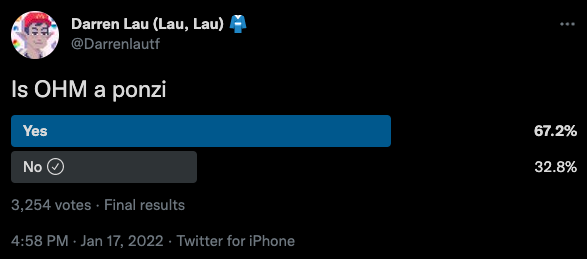
OlympusDAO held so much promise when it exploded on the DeFi scene in 2021.
The project set out to do nothing less than provide a new decentralized infrastructure for finance, and even better, it would be community-driven. At its heart, OlympusDAO offered a solution to one of the thorniest problems in DeFi — providing sustainable liquidity for projects’ native tokens.
DeFi degens loved what they saw. Within four weeks of its introduction in March, OlympusDAO’s token, OHM, skyrocketed to $1,415 and its market capitalization hit an all-time high of $4.4B in November. This wasn’t just another hot crypto play that drew speculators. Olympus was heralded for its breakthrough protocol-owned liquidity (POL) model, and it became the standard-bearer of the “DeFi 2.0” movement and a brave new era in open finance.
Now Olympus is being rocked by doubts. OHM has cratered 93% since its high on Oct. 24r and is trading at about $97 in mid-day trading New York time, CoinGecko data shows. In comparison, ETH has skidded about 30% in that period.
There’s a raft of theories why Olympus has lost investors’ confidence, but it seems clear that the project’s Byzantine complexity and unorthodox mechanics are fueling the outrage. Irate investors this week have branded Olympus a Ponzi scheme that is using its liquidity protocols to enrich early entrants at the expense of latecomers. Jordi Alexander, the CIO at digital asset trading firm, Selini Capital, characterized Olympus as a…







